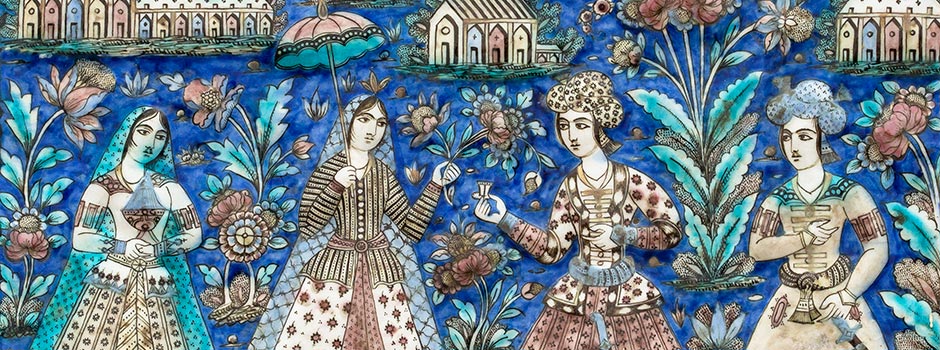
EXHIBITION AT THE ISLAMIC ARTS MUSEUM MALAYSIA ( MARCH 21 - DEC 31, 2019) Qajar Ceramics - Bridging Tradition and Modernity Exhibition
Mar 31, 2019 FEATURE, Art Collection

Of all Islamic cultures, it is Persia that has received the most attention. Somewhat neglected by the scholarship are ceramics of the Qajar era. The period from the late eighteenth to the early twentieth century was a time of change everywhere; nowhere more so than in this empire that tried to open itself to the world while retaining traditions that go back millennia.
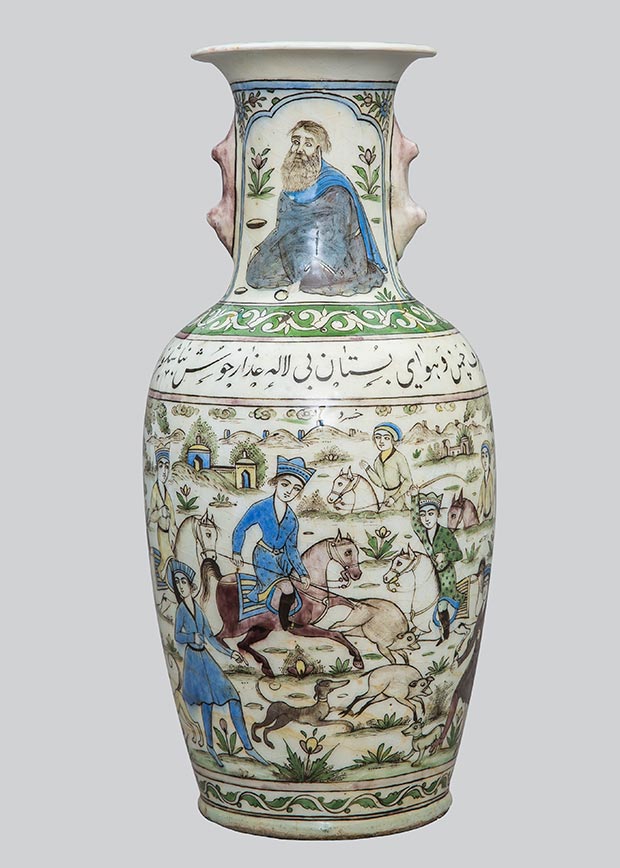 Underglaze-Painted Vase, Qajar Iran, 19th century AD / 13th century AH / Courtesy of Islamic Arts Museum Malaysia
Underglaze-Painted Vase, Qajar Iran, 19th century AD / 13th century AH / Courtesy of Islamic Arts Museum Malaysia
Qajar Ceramics - Bridging Tradition and Modernity is about an artistic transition, featuring a diversity of ceramic objects from the collection of the Islamic Arts Museum Malaysia. The exhibition offers a closer look at the distinctive characteristics of Qajar ceramics, highlighting their forms, aesthetics, and themes. These objects point us to a story of vigour and resilience behind the Persian artistic expression. From the middle of the nineteenth century onward, Persia had taken part in world expositions, generating a special interest in the luxury products of Persia. The rise of 'world fairs' in Europe encouraged international trade, art, design, and tourism, and provided education and entertainment. At these fairs, photographs reveal the amount of Persian ceramics on display, available for the European market. The late nineteenth century reflected the period of transition that Persia was facing, along with the quest for modernity and competing in the contemporary European world. As with Ottoman lands at the same time, Persia was redefining its future. With arts and crafts, in particular ceramics, the iconography and techniques fluctuated between reviving the glory of their pre-Islamic ancestry, highlighting the glorious past of their Safavid roots, adhering to the strict religious perceptions of the Ulama, and stepping into modernity and westernisation. These four stages are clearly reflected in the art of ceramic production in Persia during the Qajar period. The outcome was a combination of free choice by the craftsmen and compliance with private and public commissions. Craftsmen and artists of Qajar ceramics employed a range of decorative themes. One such is the use of human imagery, which regularly included the depiction of religious icons; figures of Qajar royalty, such as Fath Ali Shah and Nasir al-Din Shah; as well as legendary characters from Persian epics, such as the Shahnameh or Khamseh of Nezami. Floral motifs were used widely as decoration. Applied within stone carvings, stuccos, mirror works, tiles, and fretwork, its flexibility owes much to the circular motion of leaves and branches. Animal motifs, already important and prevalent in Persian art, found a new chapter during the Qajar era, where various naturalistic patterns of lions, horses, dragons, and birds came to use. Architectural and landscape paintings, while appreciated to a degree, never developed to become a decorative theme of their own. For the Persian artist, it served only to supplement other more specific themes, such as the geometrical pattern. Worked with great skill, the complexity and repetition of a geometric decoration convey order, unity, and visual balance. Also applied decoratively were inscriptions containing poetry and praise for the Qajar rule. Qajar Ceramics- Bridging Tradition and Modernity Exhibition opened to the public as part of the year-long celebration of IAMM's 20th anniversary at the Special Gallery 2 from March 23 in conjunction with Nurowz (Persian New year) and it will be on view until December 31, 2019.  Underglaze-Painted Ewer, Qajar Iran, 19th century AD / 13th century AH / Courtesy of Islamic Arts Museum Malaysia
Underglaze-Painted Ewer, Qajar Iran, 19th century AD / 13th century AH / Courtesy of Islamic Arts Museum Malaysia
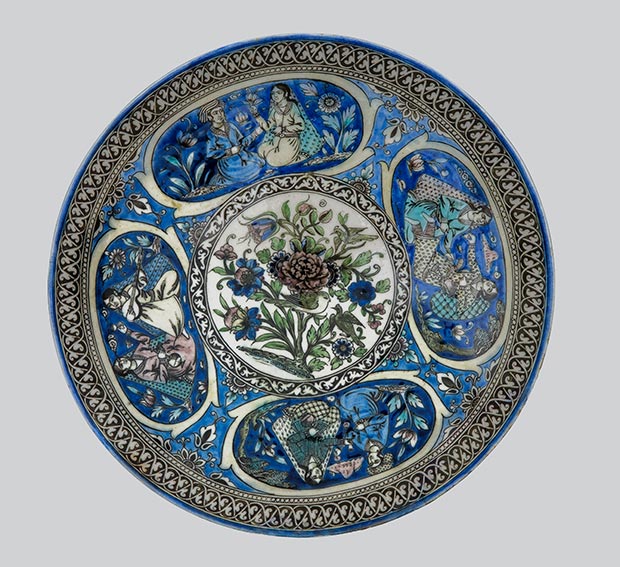 Underglaze-Painted Dish, Qajar Iran, 19th century AD / 13th century AH / Courtesy of Islamic Arts Museum Malaysia
Underglaze-Painted Dish, Qajar Iran, 19th century AD / 13th century AH / Courtesy of Islamic Arts Museum Malaysia
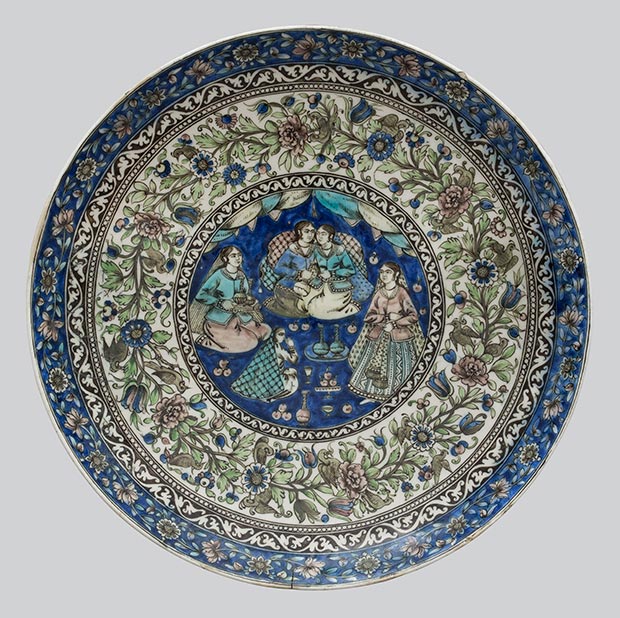 Underglaze-Painted Dish, Qajar Iran, 19th century AD / 13th century AH / Courtesy of Islamic Arts Museum Malaysia
Underglaze-Painted Dish, Qajar Iran, 19th century AD / 13th century AH / Courtesy of Islamic Arts Museum Malaysia
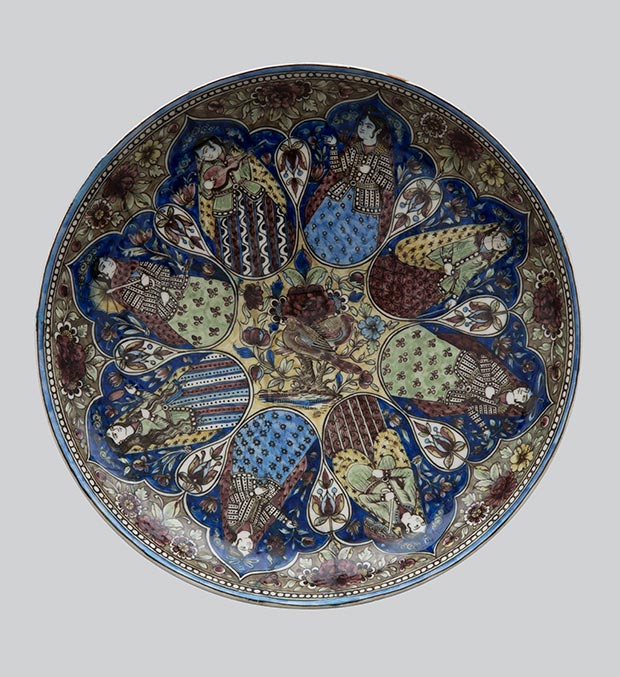 Underglaze-Painted Dish, Qajar Iran, 19th century AD / 13th century AH / Courtesy of Islamic Arts Museum Malaysia
Underglaze-Painted Dish, Qajar Iran, 19th century AD / 13th century AH / Courtesy of Islamic Arts Museum Malaysia
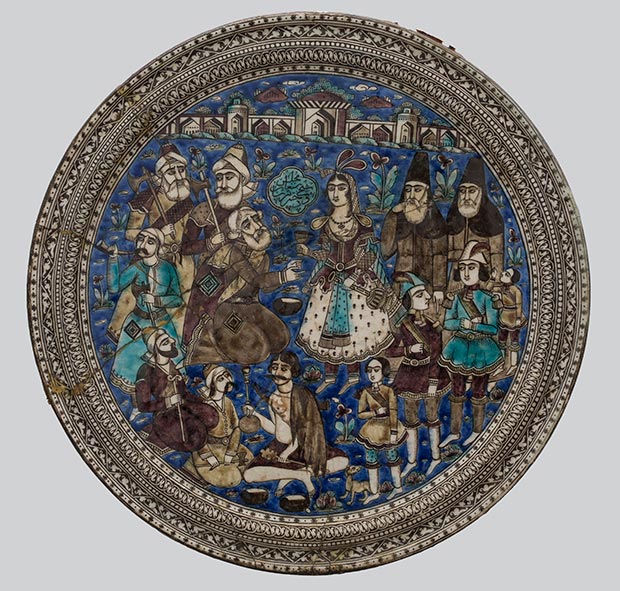 Underglaze-Painted Table Top, Qajar Iran, 19th century AD / 13th century AH / Courtesy of Islamic Arts Museum Malaysia
Underglaze-Painted Table Top, Qajar Iran, 19th century AD / 13th century AH / Courtesy of Islamic Arts Museum Malaysia
 Underglaze-Painted Bottle, Qajar Iran, 19th century AD / 13th century AH / Courtesy of Islamic Arts Museum Malaysia
Underglaze-Painted Bottle, Qajar Iran, 19th century AD / 13th century AH / Courtesy of Islamic Arts Museum Malaysia
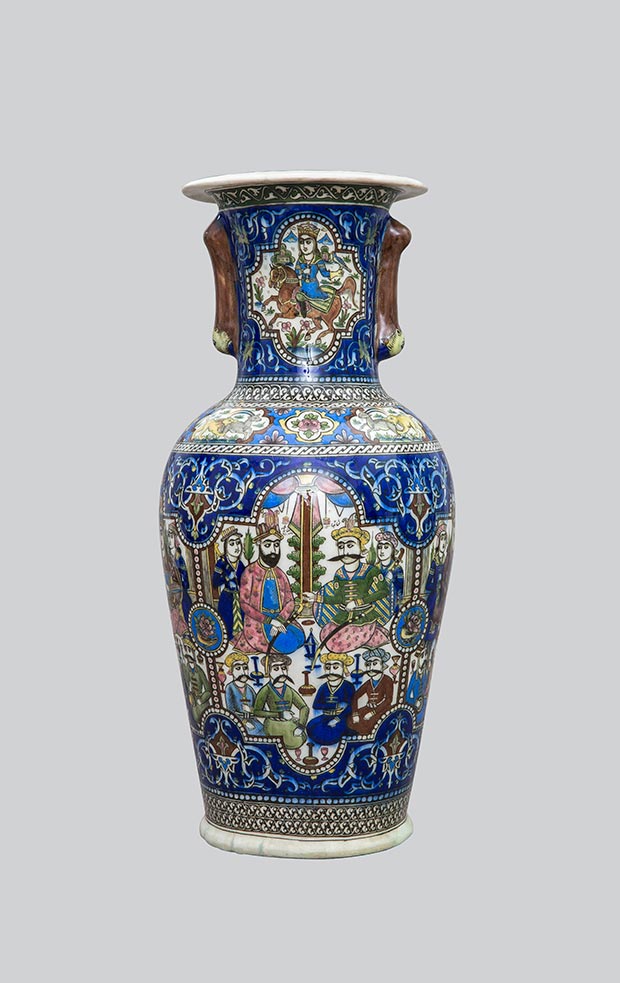 Underglaze-Painted Vase, Qajar Iran, 19th century AD / 13th century AH / Courtesy of Islamic Arts Museum Malaysia
Underglaze-Painted Vase, Qajar Iran, 19th century AD / 13th century AH / Courtesy of Islamic Arts Museum Malaysia
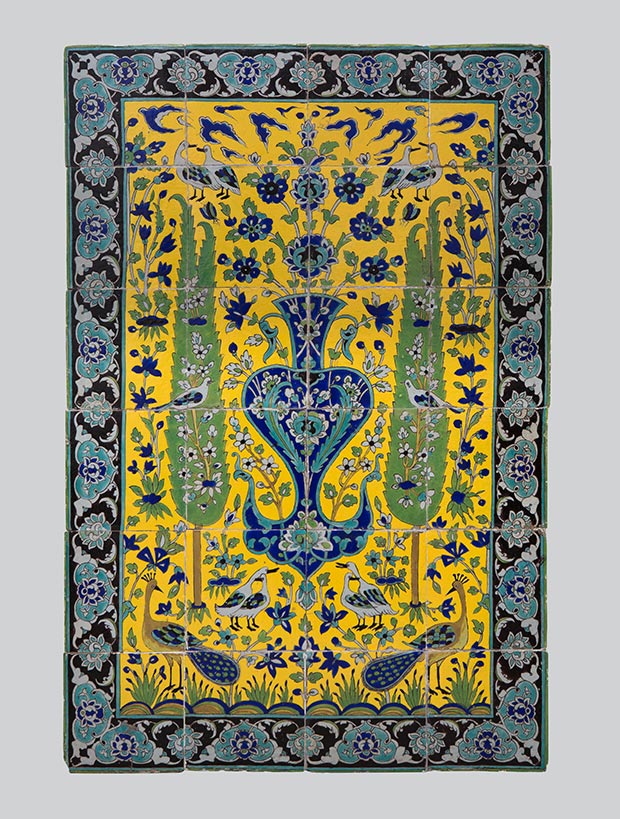 Underglaze-Painted Tile Panel, Qajar Iran, 19th century AD / 13th century AH / Courtesy of Islamic Arts Museum Malaysia
Underglaze-Painted Tile Panel, Qajar Iran, 19th century AD / 13th century AH / Courtesy of Islamic Arts Museum Malaysia
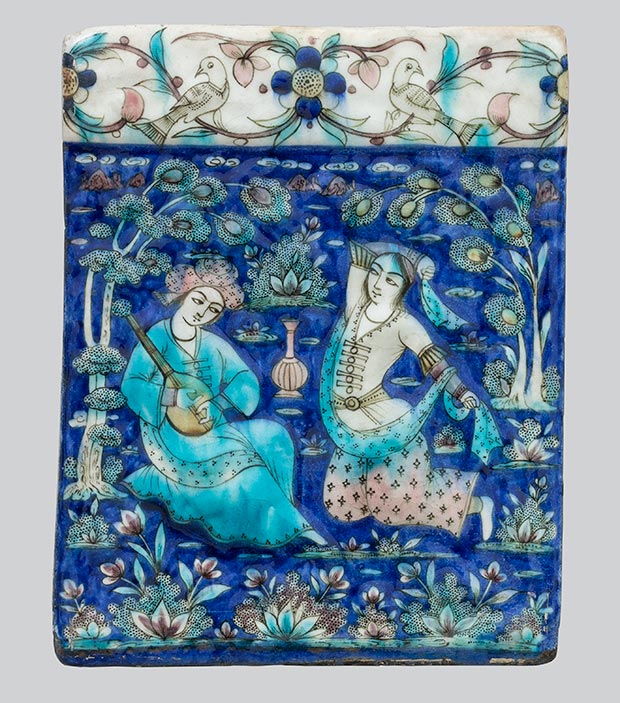 Underglaze-Painted Tile Panel, Qajar Iran, 19th century AD / 13th century AH / Courtesy of Islamic Arts Museum Malaysia
Underglaze-Painted Tile Panel, Qajar Iran, 19th century AD / 13th century AH / Courtesy of Islamic Arts Museum Malaysia
 Underglaze-Painted Tile Panel, Qajar Iran, 19th century AD / 13th century AH / Courtesy of Islamic Arts Museum Malaysia
Underglaze-Painted Tile Panel, Qajar Iran, 19th century AD / 13th century AH / Courtesy of Islamic Arts Museum Malaysia
Comments
Add a comment